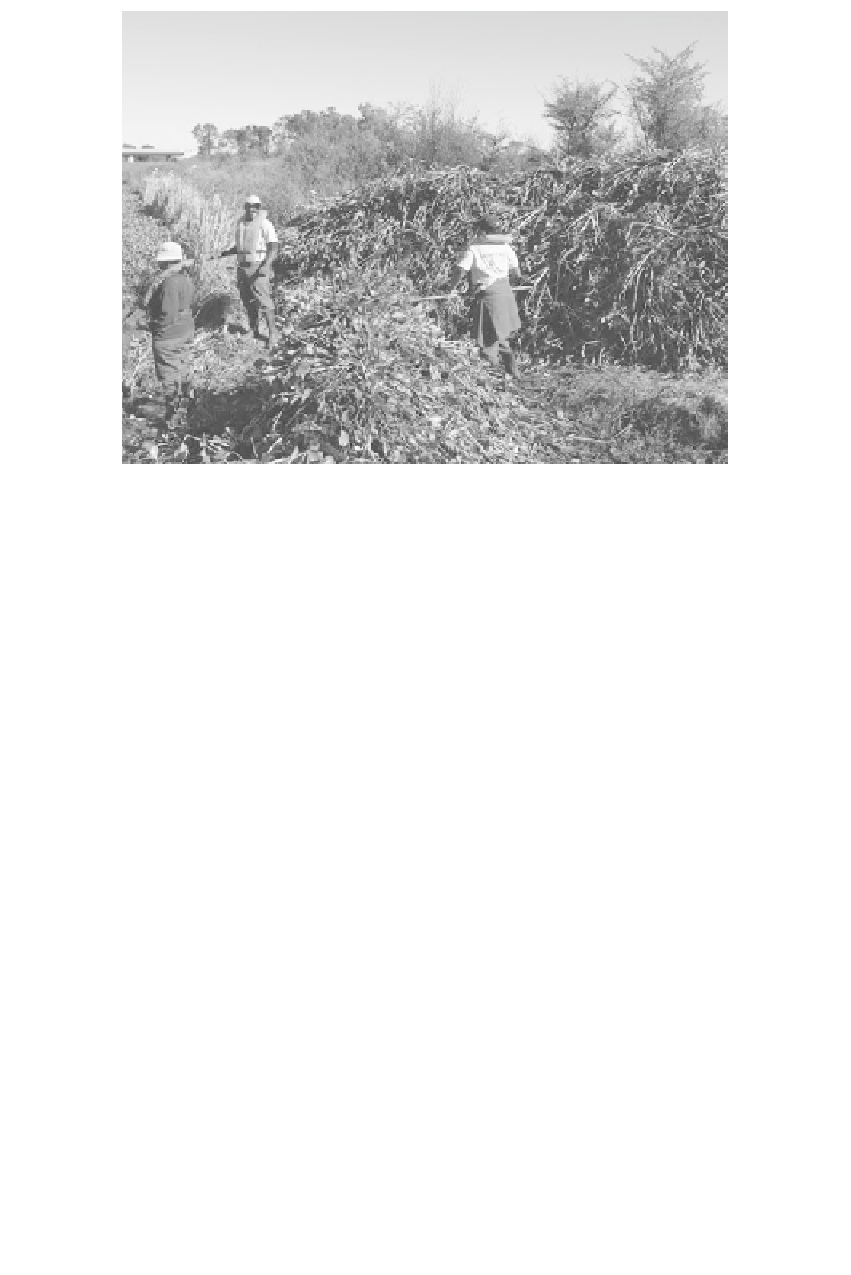Environmental Engineering Reference
In-Depth Information
Fig. 10.1
Manual removal of water hyacinth (
Eichhornia crassipes
) from the
Vaal River, South Africa, by teams employed by Working for Water of the
Department of Water Affairs and Forestry, a government initiative tasked to
reduce the impacts of alien vegetation in South Africa.
control is usually short term as milfoil eradication is often not achieved unless a
maintenance programme of harvesting every 2-3 years is conducted (Boylen
et al
.
1996).
In New Zealand, submerged aquatic weeds, particularly lagarosiphon, elodea
(
Elodea canadensis
), and egeria (
Egeria densa
) have recently invaded lakes and riv-
ers, threatening hydropower stations (Howard-Williams 1993; Wells
et al
.
1997).
Management of these infestations in hydro lakes relies on annual to biannual
mechanical harvesting because the plants continually grow back from remaining
stems and roots (Howard-Williams
et al
.
1996).
Floating aquatic macrophytes are just as di cult to control manually and mech-
anically. In the early 1980s, a manual/mechanical removal programme was ini-
tiated in an attempt to control water hyacinth on Lake Chivero in Zimbabwe
(Chikwenhere and Phiri, 1999). Although almost 500t of water hyacinth were
removed by the manual removal team, comprising 500 workers working 8 hours
per day, the rapid regeneration of the weed slowed down the eff ort and proved
expensive, with no obvious impact 6 months later. A decision was then taken to
move to heavy machinery, using a bulldozer, boat, conveyor, and dump trucks, and
while almost 2ha of plants were cleared daily, the amount of water hyacinth in the
lake was not eff ectively reduced (Chikwenhere and Phiri, 1999).

